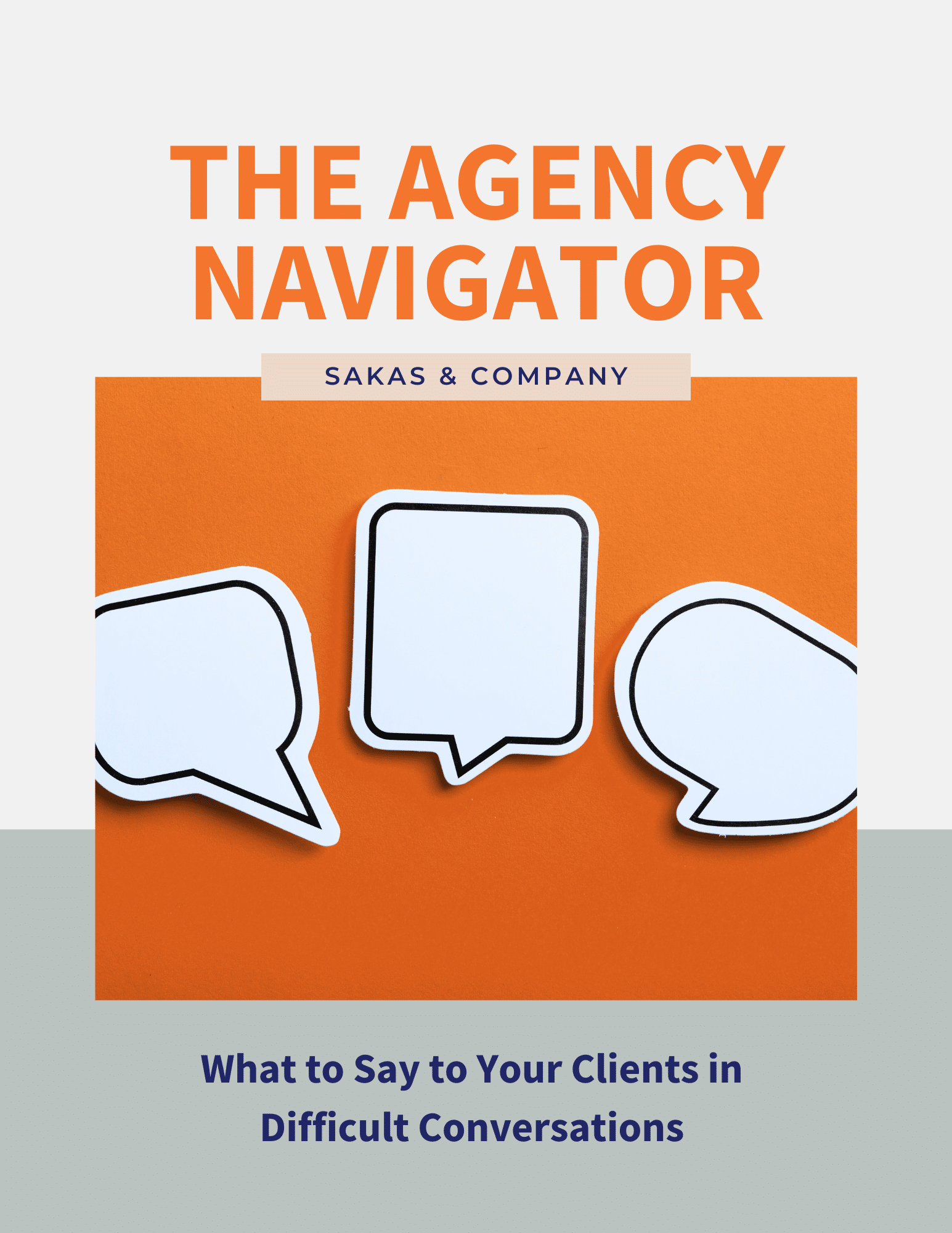What if one of your clients wants you to work faster than usual? They should pay a 20-100% “rush fee” or other convenience surcharge—but what are the steps to implement this?
Let’s take a closer look at my rush workflow framework. Your agency can use the framework to do rush work that satisfies your clients, meets your profitability targets, and keeps your team from getting [too] stressed!
Based on my prior experience as an agency PM, I’ve also shared three examples of how to apply a rush workflow with your clients. And I’ll share when you might consider waiving the rush surcharge.
7-Step Rush Workflow for Agencies
Ideally, your agency’s account managers or client-facing project managers would be the ones to execute the framework.
Here are the seven steps for your rush workflow, drawing on my prior experience as a digital PM and Director of Client Services.
- Manage the client’s expectations. Let them know there’s a rush surcharge, and you’ll follow up to confirm if you can do the work.
- See if it’s even possible. Check with internal and freelance resources, gather estimates, and recalculate the potential schedule.
- Pad the timeline. When a client is paying a rush surcharge, you definitely don’t want to miss your delivery promise.
- Share the option(s) with the client. They’ll need to confirm they’re on board with the surcharge price, approval timelines, and other factors.
- Get a signed change order. Signatures—or other extra confirmations—are important when there’s a rush surcharge! You might also seek a deposit, depending on the particulars of the client relationship.
- Start the work. This includes bringing in the external resources (if needed) and activating the updated schedule.
- Debrief afterwards. Given the high stakes, it’s especially important to do a project post-mortem on rush-rate work. This lets you improve profitability and client satisfaction in the future.
Examples: More vs. Less Client Pushback
To help you visualize how this might work, let’s look at three examples—ranging from most to least pushback from the client.
Example #1: Client Refuses to Pay the Rush Fee
This is an example of using my Reason-Options-Choose (R-O-C) negotiation framework. That is, you offer agency-acceptable options… and let the client choose.
- One of your clients said they need extra-fast turnaround.
- Your account manager says you’re glad to help; a rush surcharge will apply. If they’re on board with that, you’ll see if it’s doable.
- The client explodes, saying she shouldn’t have to pay extra for the same work. (Of course, her perception is not quite accurate.)
- The account manager (AM) says he’s sorry she’s unhappy, and he’ll follow up with options.
- Working with your project manager, the AM identifies 2-3 options.
- The AM offers two options to the client: get the deliverable in two weeks at the regular price, or pay an extra 40% to get it this week if they can sign-off on the upcharge today.
- The client huffs, simmers… and finally says they’re willing to wait for the usual turnaround. Crisis [mostly] averted.
The joy of Reason-Options-Choose is that you only offer options that are a fit for the agency.
(By the way, if this is the hypothetical client’s normal behavior, you should fire the client before it destroys your employees’ morale and the employees quit.)
Now, let’s look at a more common example—with just some client pushback.
Example #2: Some Pushback from Client
Here’s an example with some client pushback—about your “standard” timeline—for a routine request that doesn’t require custom scoping.
- Your client requests something from one of your account managers.
- The account manager (AM) quotes it at $4,000 and it’ll require three weeks to complete if they approve it today.
- Your client says they need it sooner.
- Your AM says you may be able to do it sooner, depending on availability, if the client approves your standard 50% rush surcharge.
- The client complains that last time it took your agency less than a week, and why should it take longer or cost more this time?
- The AM reminds that you had a last-minute opening before… and that “last time” was also two years ago.
- The client remembers, and asks what it would take to get it faster this time.
- Your AM shares—the rush fee would make the price $6,000 (an extra 50%) and you can probably do it in 2-3 business days if they approve it by tomorrow. Would they like you to proceed to check about availability?
- The client approves moving forward.
- Your account manager checks with a project manager (PM) to see if you have capacity.
- The PM says you can get it done and mentions the specs they’ll need to get things done.
- The AM confirms to both the client and the PM that you’ll move forward.
- Your agency does the work and bills the client $6,000.
Even if they didn’t approve the rush fee, that’s OK—you got paid at the regular turnaround.
Now, let’s look at an “easy” example.
Example #3: Smooth as Silk
Sometimes, it all goes super-smoothly. Sometimes. Here’s the “easy” flow example:
- As the account manager (AM), tell the client: “We’d love to help if we can; let me regroup with the team to see what’s possible, including what the rush surcharge would be.” [pause to let them react to that, and ideally give a verbal approval that it’ll cost more]
- Internally, see what’s possible with the existing team AND what would require additional freelancers.
- Your project manager (PM) calls around to freelancers to see what availability looks like. Since you have a “stable” of freelancers in each skillset, the PM finds someone who’s available at the right time.
- The PM calculates a rough faster “crashed” schedule, to see how the deadline changes.
- Take the timeline estimate, and pad it a bit. (Ideally, perhaps half between the original and new deadlines.)
- Calculate the new prices, based on your rush surcharge. Decide if you want to add a new payment milestone, or otherwise change the payment schedule.
- The PM (or account manager) makes a list of what the conditionals are. That is, what needs to go smoothly at the agency, AND what needs to happen from the client.
- The client-facing AM presents the new possible deadline, the new price, AND all of the conditions (including when they need to sign off on this, in order to actually meet the deadline). The key is there needs to be a short, hard deadline for when they sign off.
- Client decides, and you get started. (This is a version of Reason-Options-Choose.)
As you can see, flexibility is important but a rush workflow framework means your team doesn’t have to reinvent the wheel every time.
Should You Ever Waive the Rush Surcharge?
Yes, absolutely—if you’re intentionally choosing to make something “strategically free” (or “strategically discounted”).
For instance, if someone is a great client and your project manager confirms you have a last-minute opening to handle their work, the account manager could tell the client:
“Normally, your faster turnaround would require a 50% rush surcharge—but we happen to have extra capacity this week and we like working with you, so we’ll waive that this time.”
The key to “strategically free” is that you call-out the discount (it can’t be “secretly free”) as a special, one-time deal. That way, the client doesn’t expect this every time.
Adopting a Rush Workflow at Your Agency
To get started, decide internally that you’ll charge extra for rush work. Then, gather your delivery team to customize my rush workflow framework to your agency. This includes setting the rush surcharge and choosing what qualifies as “standard” vs. “rush” turnaround. My article on rush fees will help.
Need help navigating client pushback? Get my Agency Profitability Toolkit. One of the 50+ resources includes 20+ account management “scripts” for difficult client conversations—and half of the scripts are about handling scope creep!
Question: How do you organize handling rush requests at your agency?


